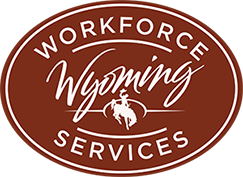Growing and Declining Industries for Wyoming
Published May 6, 2021.
Growing and Declining Industries Definitions
A growing or declining industry is defined as an industry's employment level increasing or decreasing for two quarters by 5% or more over the year. For example, all industries that grew or declined in employment by at least 5% from 2019Q1 to 2020Q1 and subsequently from 2019Q2 to 2020Q2 were included in the respective tables in this report.
Industries are defined by the North American Industry Classification System (NAICS). For this research, growing and declining industries are determined at the three-digit subsector level. For more information on NAICS, please see http://www.census.gov/epcd/www/naics.html.
The database used to generate this information was the Quarterly Census of Employment and Wages (QCEW) file, which has roughly a half-year time lag from the distribution of this report. Every quarter, when new QCEW data become available, growing and declining industry information is updated. Only subsector employment sizes of 100 or more are included in these lists. Consequently, while employment in other industries may meet the growth criteria, that such growth is taking place in industries with employment of less than 100.
For example, on the growing industry table, the average monthly employment for general merchandise stores (NAICS 452) grew by 9.8% (520 jobs) over the year in 2020Q4 and 5.5% (303 jobs) in 2020Q3, thus qualifying as a growing industry for 2020Q4. The average growth rate for 2020Q3 and 2020Q4 for NAICS 452 was 7.7%. Other growing industries included crop production (NAICS 111; 8.2%), building material & garden supply stores (NAICS 444; 9.5%), couriers & messengers (NAICS 492; 15.3%), and national security & international affairs (NAICS 928; 8.0%).
Overall, Wyoming had five growing industries in 2020Q4, which accounted for 6.0% of all industries and 5.0% of total employment.
The declining industry table reads the same way, except with negative changes, and therefore, declining industries. There were 31 declining industries in 2020Q4, which made up 36.9% of all industries and 30.1% of the state's total employment. Declining industries included support activities for mining (NAICS 213; -5,193 jobs in 2020Q4, with an average rate of change of -53.4%) and accommodation (NAICS 721; -2,393 jobs in 2020Q4, with an average rate of change of -24.3%).
The average weekly wage is calculated by dividing the total wage for the industry group by the total number of jobs for the industry group and number of weeks in the observed quarter. In 2020Q4, the average weekly wage was $700 for growing industries and $959 for declining industries. Overall, the state's average weekly wage was $1,058.

 Hire Wyo
Hire Wyo